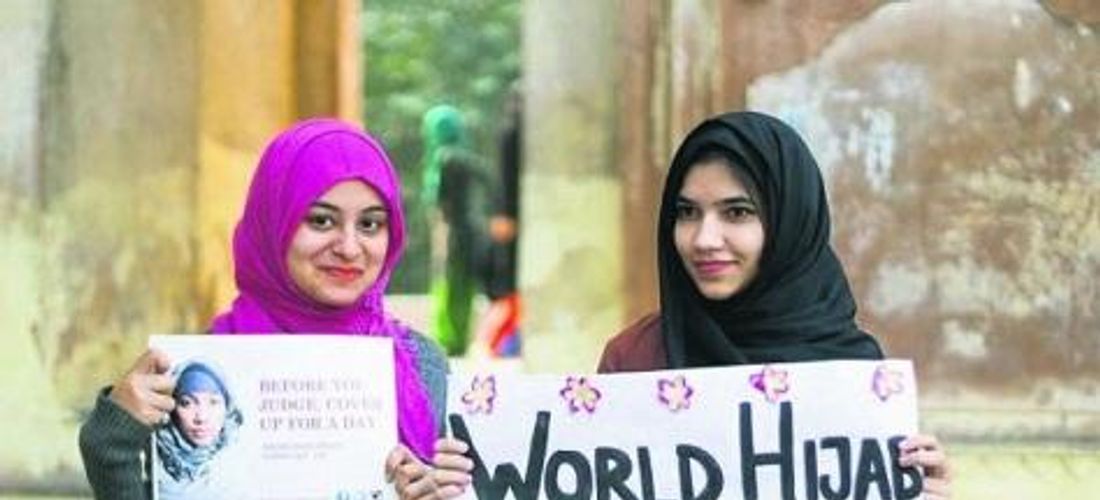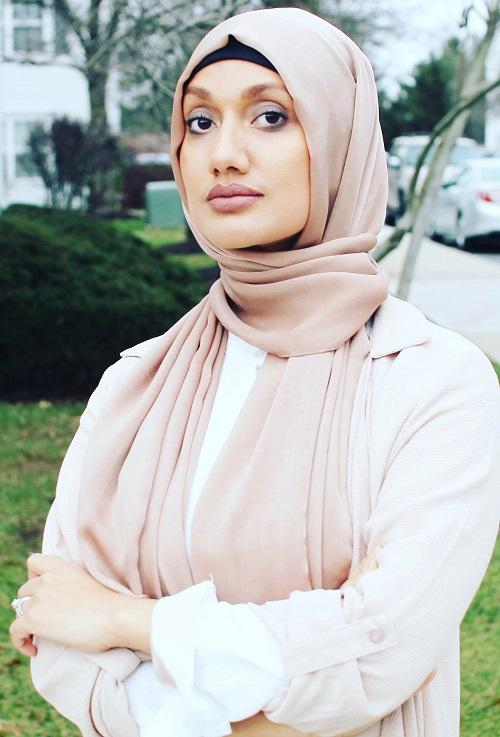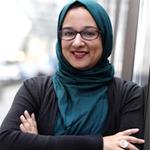Can World Hijab Day Help End Discrimination? An Interview with Founder Nazma Khan
Faith
|
Feb 1, 2019
|
5 MIN READ

Editor's Note: The timeline in this post reflects when it was originally published, in 2019.
New Yorker Nazma Khan, who came to the United States from Bangladesh, grew up as the only hijabi in her middle school and recalls those years as difficult ones when she experienced discrimination. She entered university after the tragedies of 9/11 and faced more harassment because of her hijab, which led her to a revelation: “I figured the only way to end discrimination is if we ask our fellow sisters to experience hijab themselves.” Thus, was born.
Now in its seventh year, Nazma believes wearing the hijab, even if for only a day, can be the start of ending misconceptions and fostering greater understanding. She’s met her share of critics in this journey but remains steadfast in her ideas that inviting women – non-Hijabi Muslims and non-Muslims – to wear the hijab can help increase religious tolerance. I caught up with Nazma and asked her about if the messaging of WHD has changed in the past seven years, why she wears the hijab and what she has to say to her critics.

It’s been seven years since you started World Hijab Day (WHD), meant to celebrate a woman’s right to wear hijab. How have you seen this event evolve?
When we first started World Hijab Day back in 2013, the initial response came from brave individuals taking part by donning the hijab. Today, we see this act of awareness evolve into a movement with events taking place in streets, malls, schools, hospitals, churches, offices and even in many parliaments.
In the last few years, we had many milestones. The New York State Senate to recognize February 1, 2017, as “Hijab Day” for the State of New York. Also that year, the parliament in the United Kingdom hosted World Hijab Day where the Prime Minister Theresa May was present. In 2018, the Scottish Parliament hosted a three-day World Hijab Day exhibition. During the exhibition many politicians, including Nicola Sturgeon, the First Minister of Scotland, showed their support for World Hijab Day. And, a bill declaring February 1 as inches toward final approval in the Philippines.
Has the messaging of World Hijab Day changed over the years?
The overall mission of World Hijab Day is to create a more peaceful world where global citizens respect each other through religious tolerance and understanding. The message is consistent and will not change until we break the stereotypes faced by those wearing the hijab.
What is the ultimate outcome you want to see?
The roots of World Hijab Day stemmed from my personal experience as a young girl facing discrimination. It is this form of intolerance and adversity that women in hijab face around the world that we would like to see recognized and abolished.
One of the key activities of WHD is inviting non-hijabi Muslims/non-Muslims to temporarily wear hijab. What can others learn from temporarily wearing the hijab?
Atticus Finch from “To Kill A Mockingbird” said it perfectly: “You never really understand a person until you consider things from his point of view, until you climb inside of his skin and walk around in it.” When someone voluntarily wears the hijab, she is choosing to break the antiquated shackles of bigotry and climb inside the skin of this person she wishes to embrace. This autonomous step is the beginning of tolerance and understanding.
Some feel this is an unproductive way of showing support, that simply wearing a scarf cannot foster the deep and complicated understanding and lives of hijab-wearing women. How can World Hijab Day address this?
“Simply wearing a scarf” is banned in many countries in educational and government sectors. A girl walking down the street “simply wearing a scarf” is harassed and attacked in many occasions around the world. And yet, when we ask people to wear the hijab for a day, they see that it’s not all that “simple.” We receive thousands of stories from Muslims and non-Muslims participating in this event illustrating to us how they felt, what they faced, but most importantly the love and respect they gained for our hijabi sisters.

What is your favorite thing about the hijab?
“We hear and we obey.” (Quran, 2:285) For me, it’s the command of Allah (S), and the satisfaction of obeying Him is enough for me.
After seven years of yearly promoting and planning this event, what are some of the most meaningful takeaways you’ve had?
There are many, but two that stand out for me. One, in which a non-Muslim elementary school student in Canada took part in World Hijab Day when she was only eight-years-old back in 2013. She didn’t only take part in WHD; she set up hijab table in her school to educate her classmates about hijab and create an atmosphere of tolerance amongst her peers.
The second has to be the stories of non-Muslim mothers donning the hijab in support of their Muslim daughters, and [gaining more] understanding [of] the trials and tribulations they face; overcoming the narratives of oppression and subjugation.
What are some of the most difficult conversations or challenges you and your team have had?
The most difficult has to be attacks from the Muslim community. This work we are doing is solely for the sake of Allah in order to help our sisters who are facing difficulties for their choice of wearing the hijab. And, our work has had positive, productive output around the world. Yet, there are some small lone voices that call our work an act of bid’a (innovation) and associate it with an innovated holiday, in spite of the fact that it is a day set for awareness and education.
Therefore, we went ahead and contacted many of scholars who not only say it’s allowed but even endorsed World Hijab Day.
What is your advice for someone who wants to start wearing the hijab but may be afraid or uncertain?
It’s understandable to feel that way, especially in many Muslim communities where we don’t have supporting structures to help us through difficulties such as this. One way would be to associate with likeminded people who wear the hijab and [look to them to] be that pillar of support in taking that step. Wearing the hijab on World Hijab Day also helps, as she will find a network of women around the world just like her trying on the hijab for a day. But most importantly, she should understand that it’s okay to take it step by step. As the Prophet (S) said, “You walk towards Allah (S), Allah (S) will run towards you.”
Why do you think there continues to be such a fixation with the hijab, of all the things there is to know and learn about Muslims?
Anything that is contrary to the norm will always be an issue to the masses. Therefore, wearing the hijab for a day [helps] normalize that anomaly.
What are some of the most important things you would like non-Muslims or non-hijab wearers to know about this hijab life?
Foremost, I want people to know that hijab wasn’t enforced on me by anyone. It was my choice to wear the hijab. Next, I am not shackled by this hijab, contrary to what the media wants to portray. In fact, this hijab serves as a reminder to be true to myself and my faith, which is quite liberating. Next, wearing the hijab can be quite challenging at times. But like all things you value, you have to strive hard and make sacrifices.
Subscribe to be the first to know about new product releases, styling ideas and more.
What products are you interested in?

